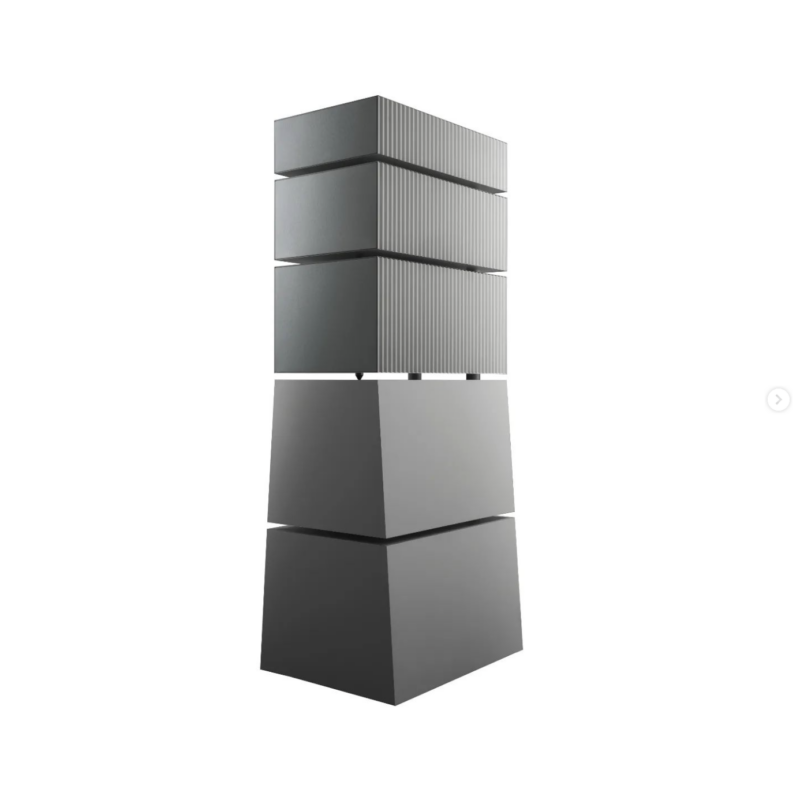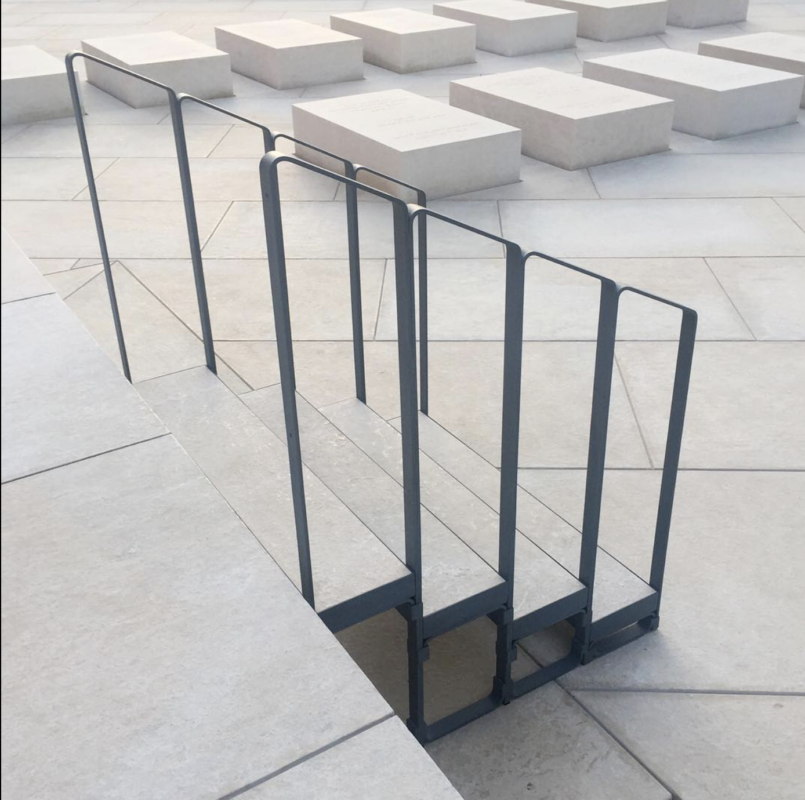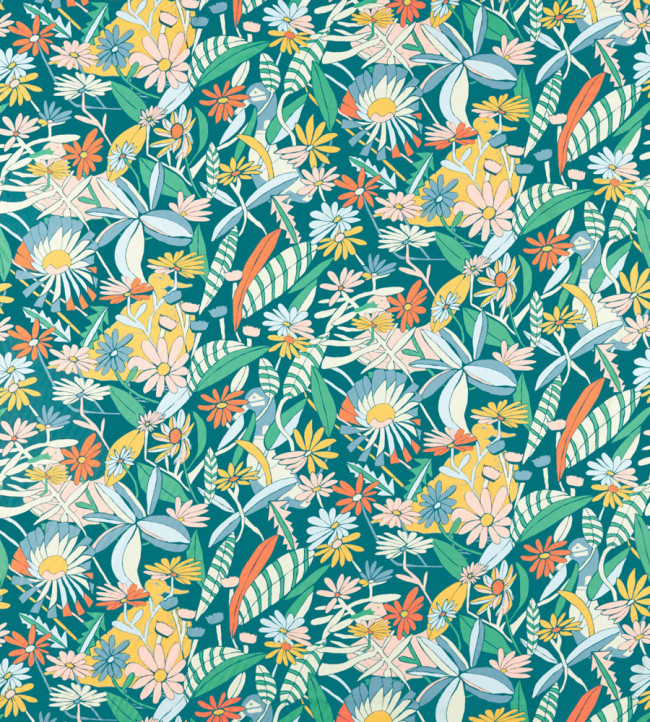
Cécile Barani is a designer who collaborates with architects, craftsmen, graphic designers, and scenographers to create captivating product and spatial design projects, serving a wide variety of private and public clients. Her creative mission focuses on achieving a harmonious equilibrium between functionality, material selection, and manufacturing techniques. Cécile’s goal is to create projects that withstand the test of time and remain relevant. To be able to reach a wide audience, and one day have one of these designs become a part of everyday life.
It’s important for me not to fix things, to let them evolve, and to ensure that the object can find its place in the future.
– Cécile Barani


Gaïa and Pulp for Goldmund
What inspired you to pursue design as a career?
My father is an architect, my mother is a scenographer, and my sister is an interior architect. From a young age, I have been immersed in this environment that nourishes me. We often work as a family; each person has their own skills and complements each other.
How has the design world changed since you started?
My concerns are focused on ecology and the presence of objects in daily life and contemporary culture. It’s a reflection I’ve been pursuing since the beginning of my career. For each project, I try to propose sustainable solutions with a limited selection of materials. Each material is chosen for its intrinsic qualities, durability, appearance, and origin.
If you could identify the biggest thing you’ve learnt as a designer over the years?
The profession of a designer is not a solitary job; it’s a team effort. Collaborations with artisans, engineers, industrialists, users, and sometimes architects are essential. The resulting object is specifically designed and undergoes continuous evolution from sketch to realization. Each project is unique, with its own challenges and constraints.
What would you consider to be your ethos around design?
It’s about finding the right balance between form, function, material, and use. The goal is to offer sustainable solutions that are tailored to the specifications and relevant data, and if necessary, to the location. While being in the service of the request, it should go beyond it, to stimulate the imagination.


What strategies do you use to overcome creative blocks and stay motivated?
I’m interested in the work of other designers, architects, scenographers, and artists. This allows me to understand their working methods and grasp the subject being addressed. The development process is the backbone; the solution found is the achievement.
Covid has changed the way in which we work. Has it changed any processes for you in regard to working with clients or manufacturing?
Not particularly, we are accustomed to adapting, finding new ways to communicate, exchange ideas, and bring forth alternative solutions to solve a problem.
Do you take any ethical considerations into account when working on a design project? If so, what?
Each contributor has something to bring. Whether it’s the user, the client, or the manufacturer. It’s these exchanges and the expertise of each participant that nourish the design process.
How do you balance creativity with practicality in your designs?
The starting point for each project is the analysis of the specifications. It’s what guides my ideas and provides me with the tools to move forward. With industrial partners, it’s the company’s expertise that influences my work. For the design of custom furniture intended for buildings, it’s the history of the spaces and architectural reflection that interest me.
How do you measure the success of a design project?
I don’t like the term “success”; I prefer the term “relevant”. For me, a relevant project is one that can endure, and acquire a sense of timelessness. Like the work of Charlotte Perriand or Eileen Gray.


Rafic Hariri Memorial Staircase, Beirut
Can you share a project you worked on that you are particularly proud of, and why?
A project recently installed at Villa E-1027 in the south of France. The installation is located at the entrance of Cap-Martin, in the bay of Cabbé, facing Eileen Gray and Jean Badovici’s Villa E-1027, the camping units, and Le Corbusier’s Cabanon. These emblematic projects of modern architecture establish new relationships between humans and nature, particularly the sea.
The project proposes to extend this attitude by reversing the gaze from the sea to the land. It offers new ways of inhabiting the coastline, floating on the horizon.
The structure, consisting of oblong shapes made of solid cork and connected with ropes, evolves according to the uses and the environment in which it is placed. At sea, it undulates with the waves and the wind, while offering a unique view of the Cap Moderne ensemble. On land, it transforms into a lounge chair, an armchair, a high seat… to be set up on the beach or in the garden, to admire the landscape.
The intrinsic properties of cork – naturally buoyant and resistant to seawater – ensure its long-lasting durability. This material has already proven its worth with the first life jackets. In line with this logic, the fasteners are made of exotic wood. The blue colour of the ropes evokes the south, the marine universe, as well as the awnings of the villa and the primary colours of Le Corbusier’s architecture.
The furniture assumes a distinct significance in this bay, whose rich history is imbued with a profound interplay between heritage and the environment. It illuminates the intricate connections established between the sky, the land, and the seabed; it reveals the places as Eileen Gray, Jean Badovici, and Le Corbusier experienced them, free and in harmony with nature.


If you could change one thing about the design industry, what would it be?
If I could change something, it would be to initiate a research process with industrial partners that could even influence their modes of production.
How do you see the role of design or even the designer evolving in the future? And what is great design to you?
The social dimension, places, and means of production are at the heart of my concerns. It’s important for me not to fix things, to let them evolve, and to ensure that the object can find its place in the future.
Article compiled by Wynne O’Brien
Images courtesy of Cécile Barani
To join BuyDesign as a Designer or Company get started below.



